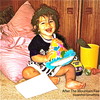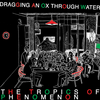So in the 70s, PBS wanted Malle to do a documentary, and he semi-randomly landed at Glencoe, Minnesota. But there was no budget to edit it, so it languished until 1985.
Nine churches, 5K people.
Perhaps not the ideal stache for a town with 80% German-ancestry population.
It’s a slightly odd documentary — I mean, Malle is really sympathetic to the people he portrays, but they still don’t come off, probably, in the way they want to be portrayed? I’m guessing? He’s sympathetic to them like if as they’re wild animals?
But it’s pretty interesting.
As a documentary, it’s a bit scattershot, but it’s fascinating. It doesn’t quite seem… ethical? But fascinating. Some of the reviews on imdb are hilarious:
I found this film to be the usual French slap in America’s face. The camera, all too often, focuses on fat people, on sloppy homes and on tacky rural areas.
And then Malle is back, six years later, and Miss Litzau is still gardening in her wonderful garden!
He wasn’t quite right about the time schedule (he predicts a Nazi uprising in 1985), but I guess correct in the long run.
Anyway, this is great, so:
God’s Country. Louis Malle. 1985.
This blog post is part of the Eclipse series.






































































%3A+Supersaw)






)

)












































